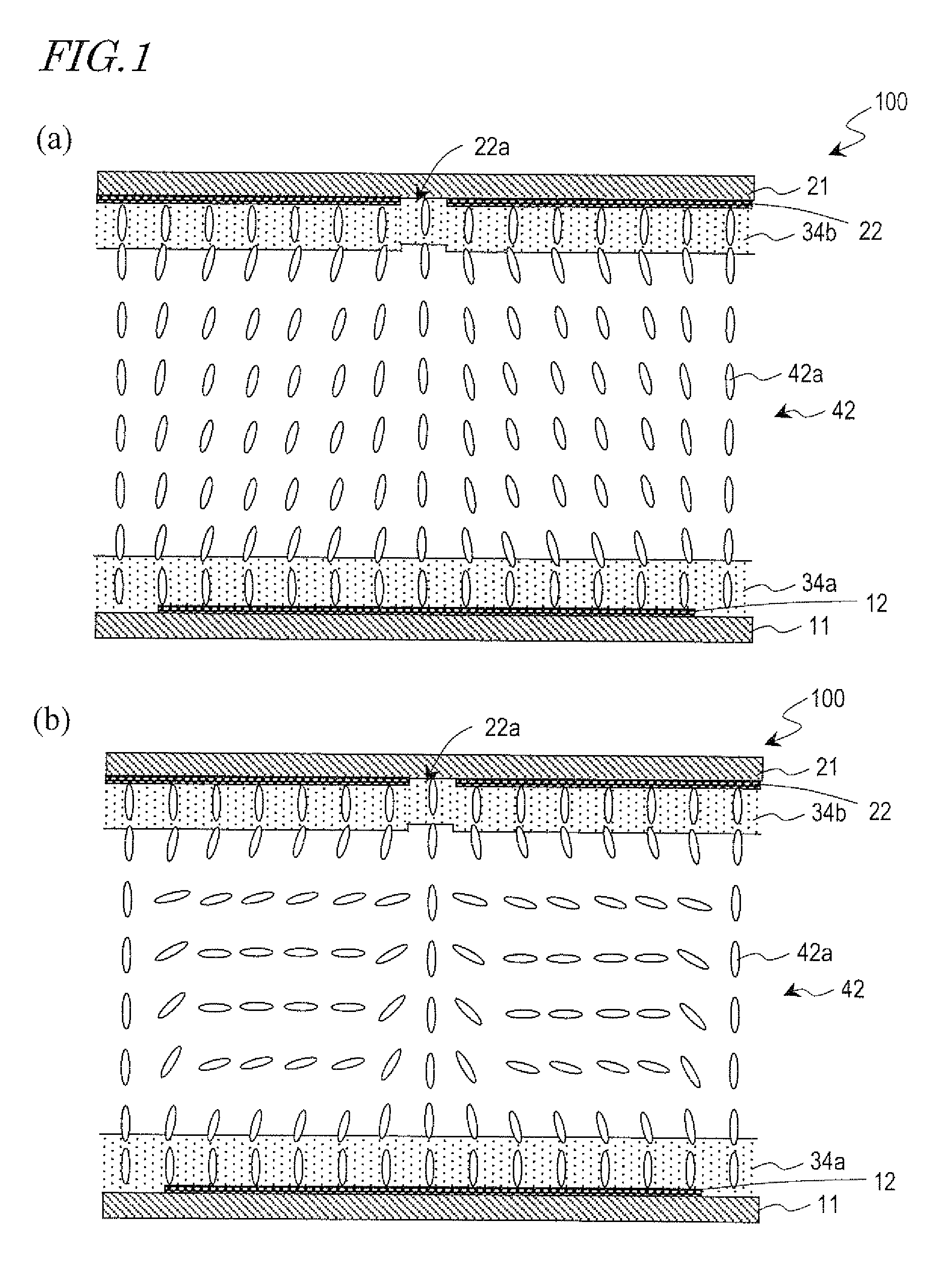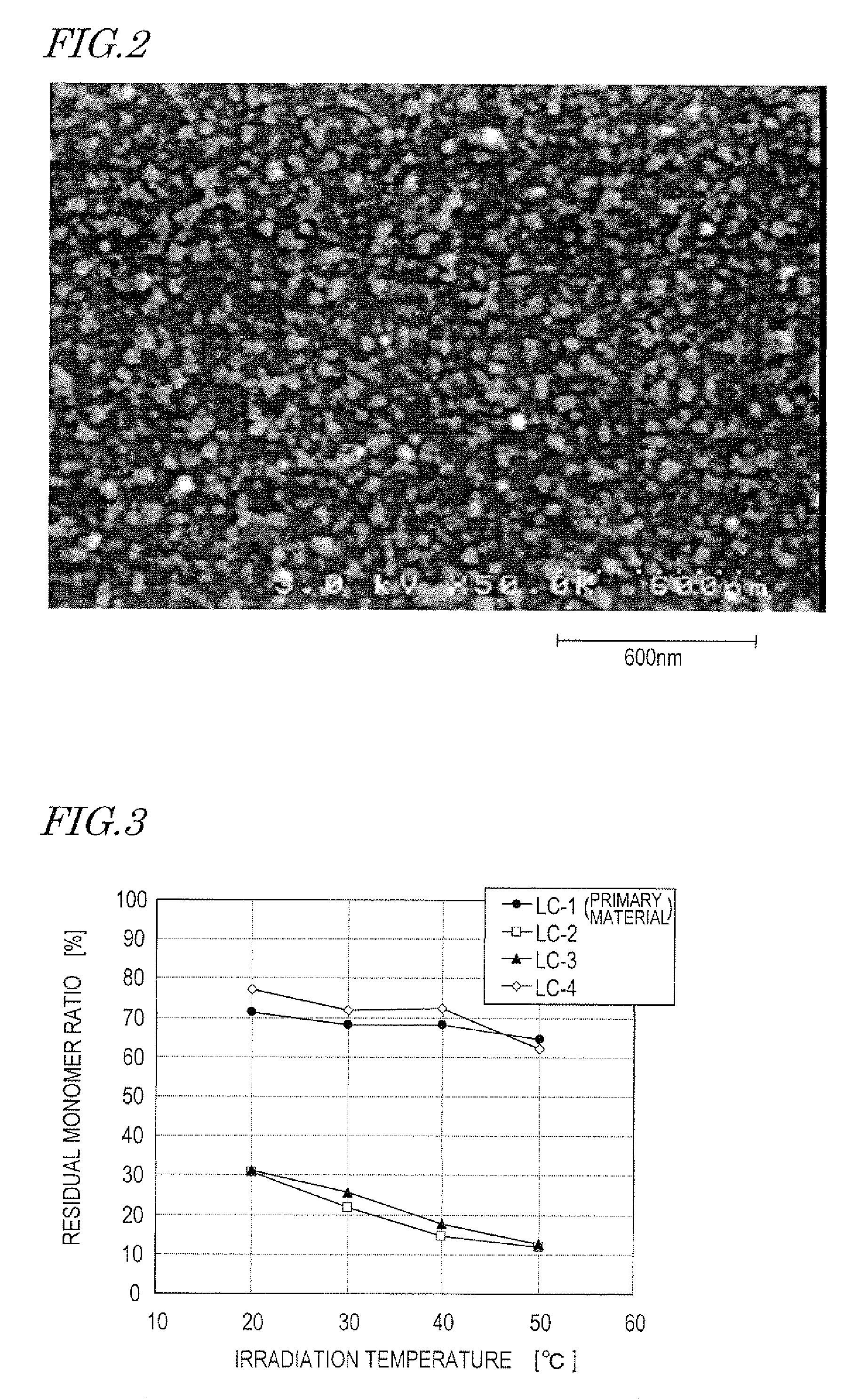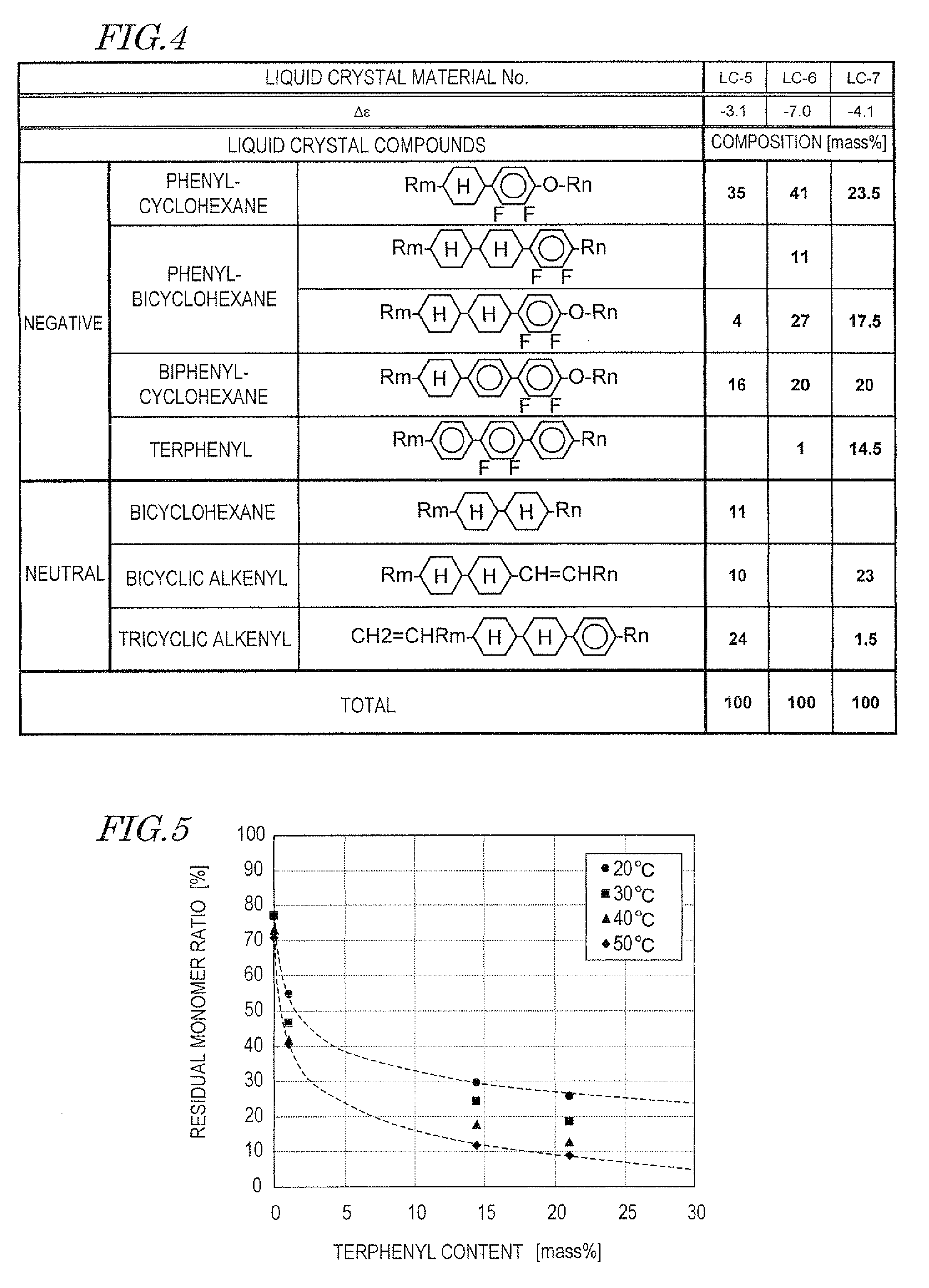Liquid crystal display device
a liquid crystal display and liquid crystal technology, applied in the direction of thin material processing, instruments, chemistry apparatus and processes, etc., can solve the problems of image sticking, unreacted portion of photopolymerizing compound remains in the liquid crystal layer, and reduce reliability
- Summary
- Abstract
- Description
- Claims
- Application Information
AI Technical Summary
Benefits of technology
Problems solved by technology
Method used
Image
Examples
Embodiment Construction
[0027]Hereinafter, a liquid crystal display device of an embodiment of the technology disclosed herein is described with reference to the drawings. The technology disclosed herein is not limited to the embodiment described below.
[0028][Liquid Crystal Display Device Fabricated Using PSA Technology]
[0029]First, a structure and operation of a liquid crystal display device fabricated using the PSA technology are described with reference to FIG. 1 and FIG. 2.
[0030]FIG. 1 is a cross-sectional view schematically showing a structure of one pixel of a liquid crystal display device 100 of an embodiment of the technology disclosed herein. FIG. 1(a) shows an alignment of liquid crystal molecules 42a in a black display state (in the absence of an applied voltage). FIG. 1(b) shows an alignment of the liquid crystal molecules 42a in a white display state (in the presence of an applied voltage). Hereinafter, the embodiment of the technology disclosed herein is described with an example of a vertica...
PUM
| Property | Measurement | Unit |
|---|---|---|
| particle diameter | aaaaa | aaaaa |
| pretilt angle | aaaaa | aaaaa |
| mass % | aaaaa | aaaaa |
Abstract
Description
Claims
Application Information
 Login to View More
Login to View More - R&D
- Intellectual Property
- Life Sciences
- Materials
- Tech Scout
- Unparalleled Data Quality
- Higher Quality Content
- 60% Fewer Hallucinations
Browse by: Latest US Patents, China's latest patents, Technical Efficacy Thesaurus, Application Domain, Technology Topic, Popular Technical Reports.
© 2025 PatSnap. All rights reserved.Legal|Privacy policy|Modern Slavery Act Transparency Statement|Sitemap|About US| Contact US: help@patsnap.com



